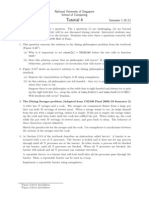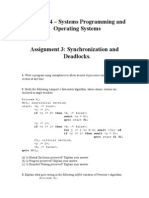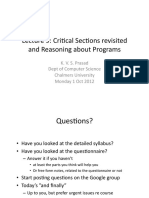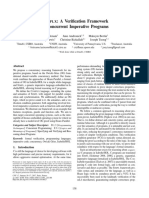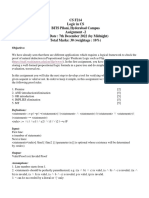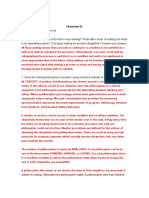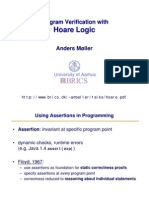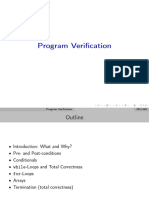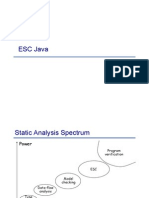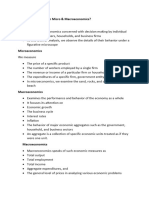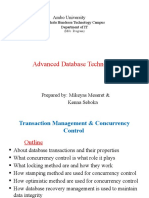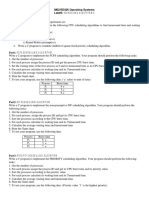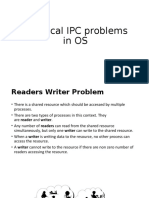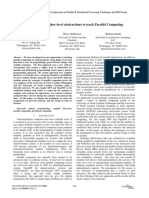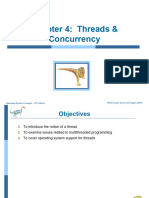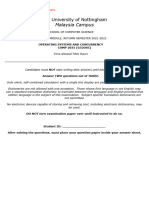0% found this document useful (0 votes)
7 views6 pagesAli Haider 155 Assignment 3
The document discusses the Dining Philosophers Problem and models it using Petri Nets, defining places, transitions, and tokens to represent philosophers and forks while ensuring deadlock prevention through resource ordering. It also explains key concepts of Hoare Logic, including Hoare triples, preconditions, postconditions, and loop invariants, with a detailed verification of a program that calculates the sum of the first n positive integers. The loop invariant is defined and proven to ensure program correctness, culminating in a formal Hoare triple that confirms the program's output.
Uploaded by
alezay.mariamCopyright
© © All Rights Reserved
We take content rights seriously. If you suspect this is your content, claim it here.
Available Formats
Download as DOCX, PDF, TXT or read online on Scribd
0% found this document useful (0 votes)
7 views6 pagesAli Haider 155 Assignment 3
The document discusses the Dining Philosophers Problem and models it using Petri Nets, defining places, transitions, and tokens to represent philosophers and forks while ensuring deadlock prevention through resource ordering. It also explains key concepts of Hoare Logic, including Hoare triples, preconditions, postconditions, and loop invariants, with a detailed verification of a program that calculates the sum of the first n positive integers. The loop invariant is defined and proven to ensure program correctness, culminating in a formal Hoare triple that confirms the program's output.
Uploaded by
alezay.mariamCopyright
© © All Rights Reserved
We take content rights seriously. If you suspect this is your content, claim it here.
Available Formats
Download as DOCX, PDF, TXT or read online on Scribd
/ 6









